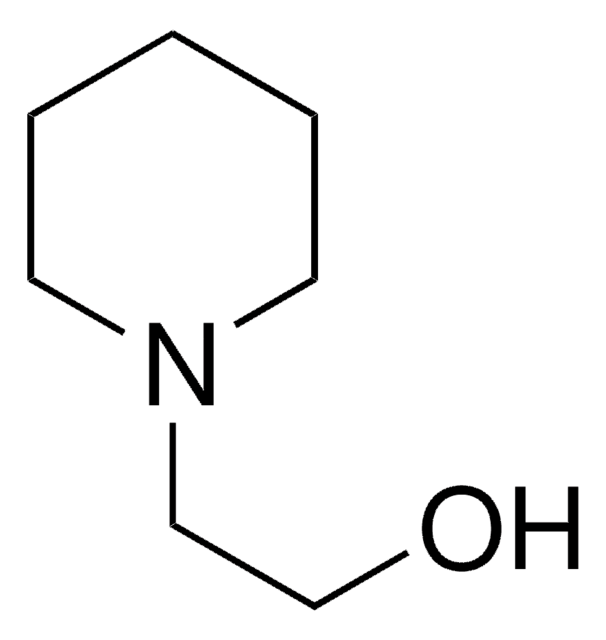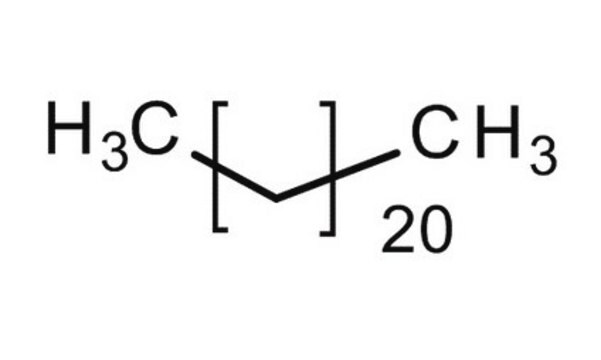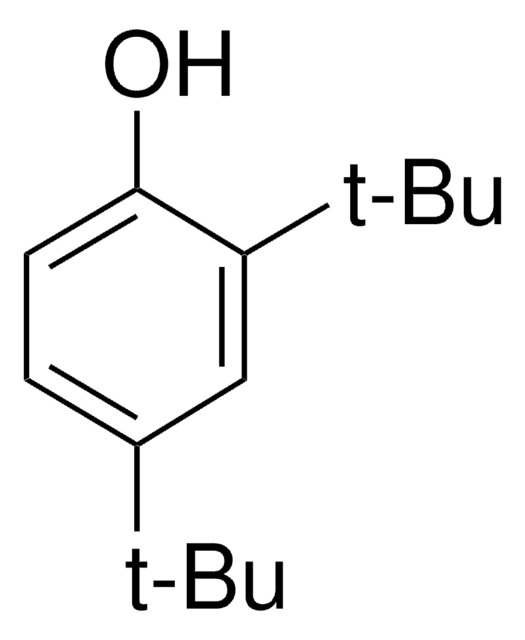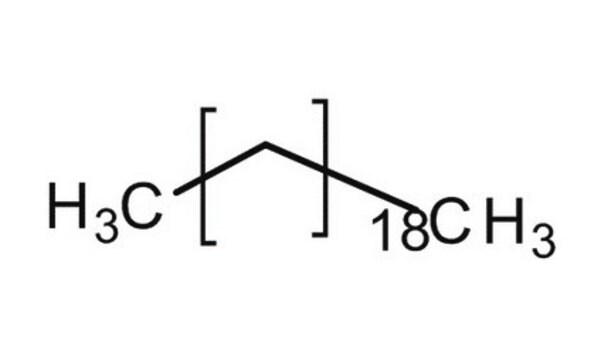About This Item
Recommended Products
vapor density
10.8 (vs air)
vapor pressure
<1 mmHg ( 21.1 °C)
Assay
99%
form
solid
bp
369 °C (lit.)
mp
42-45 °C (lit.)
density
0.778 g/mL at 25 °C (lit.)
SMILES string
CCCCCCCCCCCCCCCCCCCCCC
InChI
1S/C22H46/c1-3-5-7-9-11-13-15-17-19-21-22-20-18-16-14-12-10-8-6-4-2/h3-22H2,1-2H3
InChI key
HOWGUJZVBDQJKV-UHFFFAOYSA-N
Looking for similar products? Visit Product Comparison Guide
Related Categories
Application
Storage Class Code
11 - Combustible Solids
WGK
WGK 3
Flash Point(F)
235.4 °F - closed cup
Flash Point(C)
113 °C - closed cup
Personal Protective Equipment
Choose from one of the most recent versions:
Already Own This Product?
Find documentation for the products that you have recently purchased in the Document Library.
Customers Also Viewed
Protocols
Separation of Decane; Dodecane; Tetradecane; Hexadecane; Octadecane; Eicosane; Docosane; Tetracosane; Hexacosane; Octacosane
Our team of scientists has experience in all areas of research including Life Science, Material Science, Chemical Synthesis, Chromatography, Analytical and many others.
Contact Technical Service












